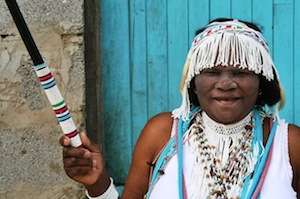The Umbilical Cord in Xhosa Culture
Birth in the Xhosa culture is an important rite of passage and is therefore treated with due respect, honour and celebration. Traditionally, the birthing mother is attended to in her rondavel by ‘grandmothers’ who have experience in birthing babies. The rondavel is made with mud or a cob-like mixture, and the roof is usually thatched, so the room is dark and circular. After the birth the mother and new baby are secluded until the cord falls off. The grandmother aids this process by mixing ash, sugar and a poisonous plant called ‘Umtuma’ together and rubbing the paste onto the newly severed cord, which is believed to aid the drying-out process. Once the cord has fallen off, the new baby is introduced to close female family members as well as to women of the wider community.
‘Inkaba’ is the ritual of burying the cord and the placenta. This has great significance to the clan and seals the attachment of the baby to her ancestral lands. ‘Inkaba’ then comes to mean one’s ancestral home and symbolises the relationship between the individual, his/her clan, the land and the spiritual world.
The burial place of an ‘Inkaba’ is a place where one must go and dream and communicate with ancestors.



